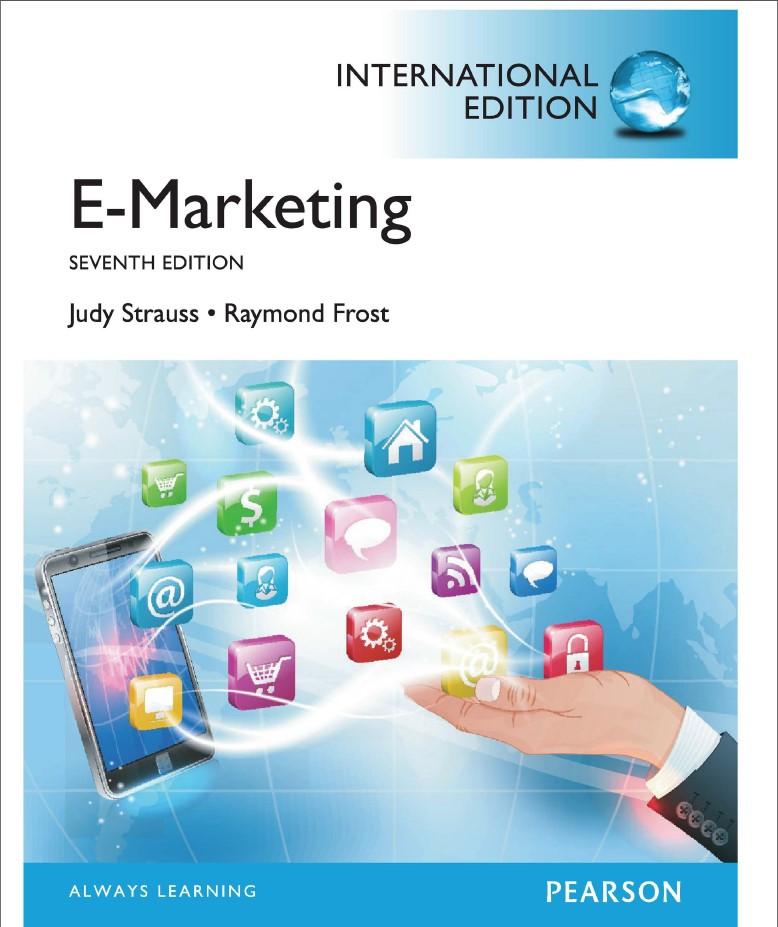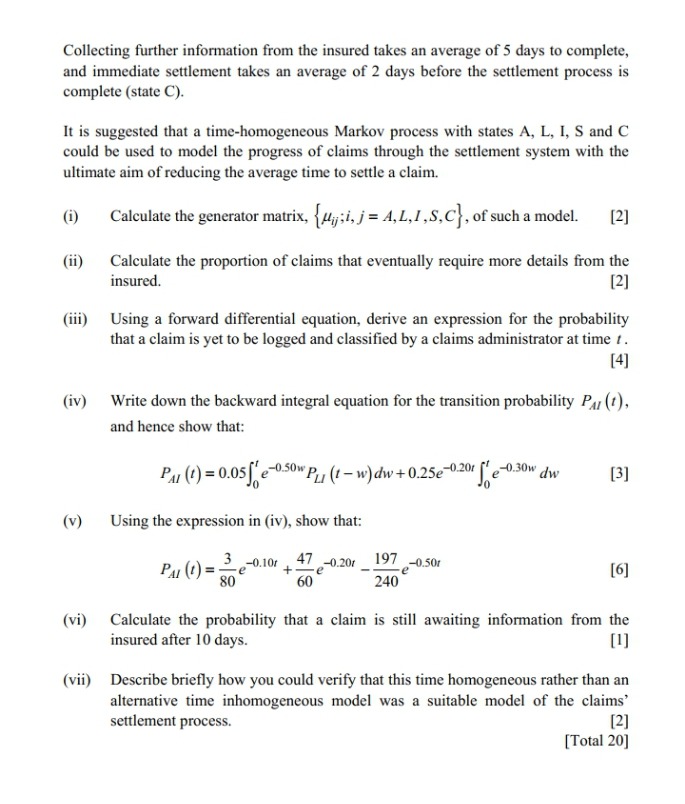
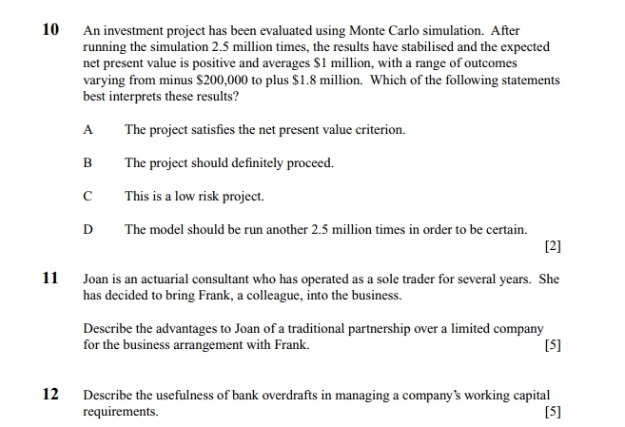
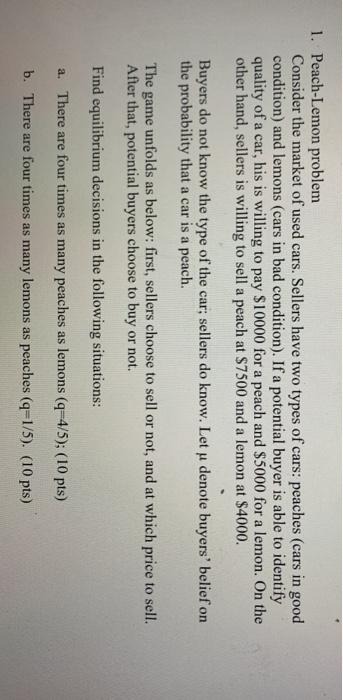
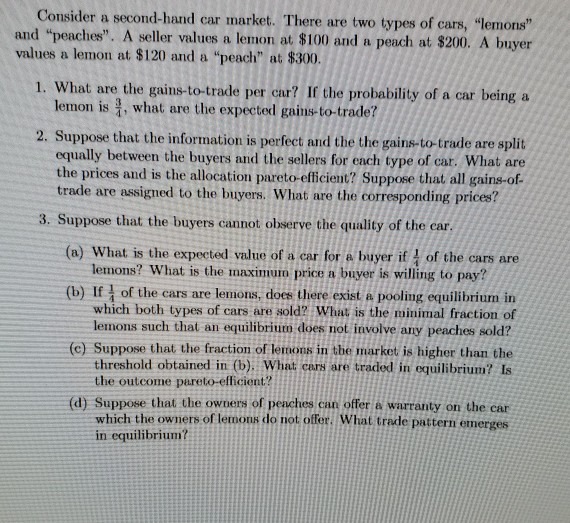

Correctly answer the following questions.
Questions.
One of the best-known papers in information economics is George Akerlof's 1970 article "The Market for Lemons." This problem describes a simplified version of Akerlof's model of the used-car market.
Consider a market for used cars with 100 buyers and 100 sellers. There are two types of cars in the market: (1) low-quality cars, or "lemons," and (2) high-quality cars, or "pears." Half of the cars in the market are lemons and half are pears; sellers know the quality of their cars, but buyers do not. Buyers are willing to pay $4,800 for a lemon and $14,400 for a pear. Sellers will part with their lemons for any price over $4,300 and will sell their pears for any price over $12,900.
Collecting further information from the insured takes an average of 5 days to complete, and immediate settlement takes an average of 2 days before the settlement process is complete (state C). It is suggested that a time-homogeneous Markov process with states A, L, I, S and C could be used to model the progress of claims through the settlement system with the ultimate aim of reducing the average time to settle a claim. (i) Calculate the generator matrix, (1;;i, j = 4, L, I, S, C}, of such a model. [ (ii) Calculate the proportion of claims that eventually require more details from the insured. [2] (iii) Using a forward differential equation, derive an expression for the probability that a claim is yet to be logged and classified by a claims administrator at time . [4] (iv) Write down the backward integral equation for the transition probability Pay (t), and hence show that: PAr (t) = 0.05 ["e-0.50w PLI (t- w)dw +0.25e-0.201 [' e-0.30w [3] (v) Using the expression in (iv), show that: PAI (1) =- 3 -0.101 47 -0.20r 197 -0.50r 60 [6] 80 240 (vi) Calculate the probability that a claim is still awaiting information from the insured after 10 days. [1] (vii) Describe briefly how you could verify that this time homogeneous rather than an alternative time inhomogeneous model was a suitable model of the claims' settlement process. [2] [Total 20]10 An investment project has been evaluated using Monte Carlo simulation. After running the simulation 2.5 million times, the results have stabilised and the expected net present value is positive and averages $1 million, with a range of outcomes varying from minus $200,000 to plus $1.8 million. Which of the following statements best interprets these results? A The project satisfies the net present value criterion. B The project should definitely proceed. C This is a low risk project. D The model should be run another 2.5 million times in order to be certain. [2] 11 Joan is an actuarial consultant who has operated as a sole trader for several years. She has decided to bring Frank, a colleague, into the business. Describe the advantages to Joan of a traditional partnership over a limited company for the business arrangement with Frank. [5] 12 Describe the usefulness of bank overdrafts in managing a company's working capital requirements. [5]1. Peach-Lemon problem Consider the market of used cars. Sellers have two types of cars: peaches (cars in good condition) and lemons (cars in bad condition). If a potential buyer is able to identify quality of a car, his is willing to pay $10000 for a peach and $5000 for a lemon. On the other hand, sellers is willing to sell a peach at $7500 and a lemon at $4000. Buyers do not know the type of the car; sellers do know. Let u denote buyers' belief on the probability that a car is a peach. The game unfolds as below: first, sellers choose to sell or not, and at which price to sell. After that, potential buyers choose to buy or not. Find equilibrium decisions in the following situations: a. There are four times as many peaches as lemons (q=4/5); (10 pts) b. There are four times as many lemons as peaches (q=1/5). (10 pts)Consider a second-hand car market. There are two types of cars, "lemons" and "peaches". A seller values a lemon at $100 and a peach at $200. A buyer values a lemon at $120 and a "peach" at $300. 1. What are the gains-to-trade per car? If the probability of a car being a lemon is , what are the expected gains-to-trade? 2. Suppose that the information is perfect and the the gains-to-trade are split equally between the buyers and the sellers for each type of car. What are the prices and is the allocation pareto-efficient? Suppose that all gains-of- trade are assigned to the buyers. What are the corresponding prices? 3. Suppose that the buyers cannot observe the quality of the car. (a) What is the expected value of a car for a buyer if + of the cars are lemons? What is the maximum price a buyer is willing to pay? (b) If * of the cars are lemons, does there exist a pooling equilibrium in which both types of cars are sold? What is the minimal fraction of lemons such that an equilibrium does not involve any peaches sold? (c) Suppose that the fraction of lemons in the market is higher than the threshold obtained in (b). What cars are traded in equilibrium? Is the outcome pareto-efficient? (d) Suppose that the owners of peaches can offer a warranty on the car which the owners of lemons do not offer. What trade pattern emerges in equilibrium?Question 4 (6 points) Consider the market for used cars with two types: "lemons" (cars with problems) and "peaches" (cars without problems). Assume that a seller knows whether a car is a lemon or a peach, but a buyer cannot tell until the car is purchased. Suppose that the reservation price of a peach is $6,000 to the buyer and $5,000 to the seller. The reservation price of a lemon is $2,000 to the buyer and $500 to the seller. a. (3 points) Suppose that there are an equal number of peaches and lemons for sale and that buyers know this to be the case. In equilibrium, what proportion of car sales are peaches? b. (3 points) Now assume that the probability of getting a lemon is variable. Suppose that Jorge starts a business to sell used cars with warranties. In particular, he buys all used cars in the market at $5,000 each (the reservation price of a peach's seller), and sells them at $6,000, of which $1,000 is the cost of the warranty. If the car is a lemon, he refunds the purchase price (that includes the warranty), and resells the lemon at $2,000 without a warranty. Let p be the fraction of used cars that are lemons. For what range of p is this business profitable for Jorge
















